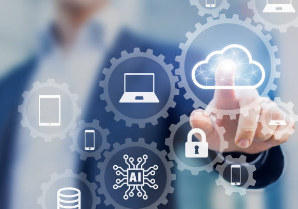CCE stands for Customer Care Executive, a professional who acts as the first point of contact between a company and its customers. Whether it’s answering a question, solving a problem, or simply guiding a customer through a process, a CCE plays a vital role in keeping customers happy and loyal.
Customer care executives work across many industries such as e-commerce, banking, telecom, healthcare, retail, travel, and IT services. Traditionally, their main job was to answer calls and resolve basic queries. But things have changed a lot.
In 2025, the role of a customer care executive is no longer just about picking up phones. Today, they handle customer concerns through calls, emails, live chats, social media, and even AI-based platforms. They’re trained not just to answer questions, but to build relationships, improve customer satisfaction, and support the brand’s reputation.
As businesses become more customer-focused, the demand for skilled customer care professionals is growing fast. In the future, these executives will play an even bigger role in creating smooth and personalized experiences for customers.
In this blog, you’ll learn everything you need to know about the roles and responsibilities of a customer care executive. We’ll also cover the job description, key skills, career growth opportunities, and other useful insights for both job seekers and HR professionals.
Let’s dive in and explore what makes customer care such a powerful and essential part of modern business.
Who is a Customer Care Executive?
A customer care executive is a frontline professional responsible for managing customer interactions, resolving queries, and ensuring positive customer experiences across various communication channels.
They serve as the primary point of contact between customers and the organization, handling both inbound and outbound communications.

Key Distinctions in Customer Support Roles:
Customer Care Executive vs Customer Support Executive (CCE vs CSE):
- Customer care executives focus on building relationships and ensuring customer satisfaction
- Customer support executives primarily handle technical issues and product-related queries
- Both roles often overlap in smaller organizations
Customer Care vs Call Center Executive:
- Customer care executives work across multiple channels (phone, email, chat, social media)
- Call center executives primarily handle voice-based communications
- Customer care roles require broader skill sets and product knowledge
BPO Customer Care Executive:
- Specifically work in Business Process Outsourcing environments
- Handle outsourced customer service operations for multiple clients
- Often require knowledge of different industry verticals and client-specific processes
Also Read: Desktop Support Engineer Roles and Responsibilities to explore key duties, required skills, and career growth in IT support.
Customer Care Executive Job Description
A well-written Customer Care Executive job description should clearly outline:
- The job title and summary
- Key roles and responsibilities
- Required skills and qualifications
- Experience level (fresher, mid-level, etc.)
- Type of communication channels (voice, chat, email, etc.)
- Work environment (remote, on-site, shift timings)
- Reporting structure and KPIs (e.g., CSAT, response time)
A good JD helps HR professionals attract the right candidates and gives job seekers clarity about what to expect in the role.
Here’s a sample template of Customer Care Executive you can use:
Job Title: Customer Care Executive
Experience: 0-3 Years
Location: Mumbai / Remote / Hybrid
Employment Type: Full-time
Job Summary:
We are looking for a Customer Care Executive (CCE) who can serve as the first point of contact between the organization and its customers. The ideal candidate will be responsible for handling customer queries, complaints, feedback, and support requests via multiple communication channels including calls, emails, live chat, and social media.
A CCE must be skilled at problem-solving, maintaining professionalism under pressure, and delivering a consistently high level of customer satisfaction. The role demands strong communication, empathy, and technical understanding of the products or services offered.
Key Roles and Responsibilities:
Customer Interaction:
- Respond promptly and professionally to customer inquiries via phone, email, or chat
- Listen actively and understand customer concerns or issues
- Provide accurate information related to products, services, pricing, or policies
Issue Resolution:
- Troubleshoot and resolve customer complaints in a timely and satisfactory manner
- Escalate unresolved issues to the appropriate internal teams or higher management
- Follow up to ensure complete resolution and satisfaction
Data Handling & Reporting:
- Maintain detailed records of customer interactions, feedback, and transactions
- Log all calls and support tickets in CRM software or helpdesk systems
- Generate reports on recurring issues, customer satisfaction, and resolution rates
Process Adherence:
- Follow company policies and standard operating procedures (SOPs)
- Meet or exceed performance metrics such as Average Handling Time (AHT), First Call Resolution (FCR), and CSAT (Customer Satisfaction Score)
- Participate in regular training sessions and team meetings
Continuous Improvement:
- Provide customer feedback to internal teams for product or service enhancements
- Suggest improvements in the customer support process to boost efficiency
- Stay updated on new product features, updates, and policy changes
Key Skills and Competencies:
- Excellent verbal and written communication skills (in English and regional languages, if applicable)
- Strong listening and interpersonal skills
- Patience, empathy, and a positive attitude
- Ability to handle pressure and high call volumes
- Problem-solving and analytical thinking
- Basic computer literacy and familiarity with CRM tools (e.g., Zoho, Freshdesk, Salesforce)
- Typing speed of at least 30–40 WPM (for chat/email-based roles)
- Multitasking abilities and time management
Educational Qualifications:
- Minimum: 10+2 or Equivalent
- Preferred: Graduate in any stream (Arts, Commerce, Science, Business)
- Additional certifications in Customer Service, Communication, or CRM tools are a plus
Work Environment & Conditions:
- May involve rotational shifts, weekend work, or night shifts depending on the company
- Remote, hybrid, or in-office roles available
- Must have access to a quiet workspace and stable internet (for remote roles)
Growth Opportunities:
Customer Care Executives can grow into roles such as:
- Senior Customer Executive
- Team Leader
- Quality Analyst
- Customer Success Manager
- Operations Manager
Salary Range:
₹15,000 to ₹35,000/month (varies based on industry, location, and experience)
Additional performance bonuses and shift allowances may apply.
Discover our Job Description category to find out more about to explore various job description templates and roles and responsibilities of popular careers in 2025.
Key Roles and Responsibilities of a Customer Care Executive
A Customer Care Executive is responsible for handling inbound and outbound customer communications through phone calls, emails, chat, and social media. Their main role is to resolve customer queries, provide product or service support, ensure timely follow-ups, and maintain a consistent brand voice across all customer interactions.
In addition to solving problems and updating CRM records, customer care executives also assist with issue escalation, data management, customer feedback collection, and sales support. They generate reports, document SOPs, and use customer insights to improve service quality and customer satisfaction, making them essential to a company’s customer experience strategy.

Check out the primary and secondary roles and responsibilities of customer care executive in detail below-
Primary Roles and Responsibilities
Inbound and Outbound Customer Communications:
- Handle incoming customer calls, emails, and chat inquiries promptly and professionally
- Make outbound calls for follow-ups, survey completion, and proactive customer outreach
- Respond to customer queries across multiple channels within defined SLA timeframes
- Ensure consistent brand voice and messaging across all customer touchpoints
Query Resolution and Problem-Solving:
- Analyze customer issues and provide accurate, timely solutions
- Troubleshoot basic technical problems and guide customers through step-by-step solutions
- Escalate complex issues to appropriate departments while maintaining ownership
- Follow up on escalated cases to ensure complete resolution
Customer Data Management:
- Accurately record customer information, interactions, and case details in CRM systems
- Maintain detailed logs of customer complaints, feedback, and resolution status
- Update customer profiles with relevant information for future reference
- Ensure data privacy and security compliance in all customer interactions
Issue Escalation and Coordination:
- Identify cases requiring specialist intervention and escalate appropriately
- Coordinate with technical teams, billing departments, and management for complex resolutions
- Communicate escalation status and timelines to customers proactively
- Ensure smooth handoffs between departments without losing customer context
Secondary Roles and Responsibilities
Customer Feedback and Follow-up:
- Conduct post-resolution follow-up calls to ensure customer satisfaction
- Collect and document customer feedback for product and service improvements
- Participate in customer satisfaction surveys and feedback analysis
- Identify trends in customer complaints and suggest process improvements
Sales Support and Revenue Generation:
- Identify upselling and cross-selling opportunities during customer interactions
- Promote new products, services, or features based on customer needs
- Convert customer inquiries into potential sales leads
- Support retention efforts by addressing customer concerns proactively
Reporting and Documentation:
- Prepare daily, weekly, and monthly customer service reports
- Document standard operating procedures and troubleshooting guides
- Maintain knowledge base articles and FAQ updates
- Contribute to team meetings with insights from customer interactions
CRM and System Management:
- Keep CRM systems updated with accurate customer information
- Learn and adapt to new customer service tools and technologies
- Maintain ticket management systems and ensure proper case closure
- Generate reports on customer service metrics and KPIs
Also Read: Medical Representative Roles and Responsibilities to learn about daily tasks, key skills, and career path in pharmaceutical sales.
Essential Skills for Customer Care Executives
Customer Care Executives require a blend of combination skills– communication, problem-solving, product knowledge, and technical skills to handle customer queries effectively. Key skills include clear verbal and written communication, active listening, and the ability to adapt tone and language based on the customer’s needs and emotional state.
They must also be strong in analytical thinking, decision-making, empathy, and CRM tool usage. Proficiency in multiple languages, familiarity with helpdesk software like Zendesk or Salesforce, and a customer-first mindset are essential. Staying updated with product knowledge and managing stress during tough interactions are equally important for delivering excellent support.
Communication Skills
- Verbal Communication: Clear, articulate speech with proper pronunciation and grammar. Ability to adjust communication style based on customer demographics and emotional state.
- Written Communication: Professional email writing, chat support, and social media response skills. Capability to explain complex information in simple, understandable terms.
- Active Listening: Genuine attention to customer concerns, asking clarifying questions, and demonstrating empathy through verbal and non-verbal cues.
- Multilingual Abilities: Proficiency in regional languages and English, with cultural sensitivity for diverse customer bases.
Problem-Solving Abilities
- Analytical Thinking: Breaking down complex customer issues into manageable components and identifying root causes efficiently.
- Creative Solutions: Thinking outside the box to resolve unique customer problems while staying within company policies.
- Decision Making: Quick, informed decisions on customer issues with appropriate escalation when necessary.
- Process Improvement: Identifying inefficiencies in current processes and suggesting improvements based on customer feedback.
Product Knowledge
- Deep Understanding: Comprehensive knowledge of company products, services, features, and pricing structures.
- Competitive Awareness: Understanding of competitor offerings to position company advantages effectively.
- Technical Proficiency: Basic troubleshooting skills for technical products and services.
- Continuous Learning: Staying updated with product updates, new features, and industry trends.
Empathy and Patience
- Emotional Intelligence: Understanding and managing both customer emotions and personal reactions during difficult interactions.
- Stress Management: Maintaining composure and professionalism during high-pressure situations and difficult customer interactions.
- Customer-Centric Mindset: Genuinely caring about customer success and satisfaction rather than just closing tickets.
- Conflict Resolution: De-escalating tense situations and finding mutually beneficial solutions.
Technology and Tools Proficiency
- CRM Systems: Expertise in platforms like Salesforce, HubSpot, Zoho, or company-specific customer management systems.
- Communication Tools: Proficiency with VoIP systems, live chat platforms, email management, and social media management tools.
- Ticketing Systems: Experience with help desk software like Freshdesk, Zendesk, or ServiceNow.
- AI and Automation: Understanding of chatbots, automated responses, and AI-assisted customer service tools.
Customer Care Executive KPIs (Key Performance Indicators)
Customer Care Executive KPIs (Key Performance Indicators) include key metrics that measure performance and service quality, such as First Call Resolution (FCR), Average Handling Time (AHT), Customer Satisfaction Score (CSAT), Net Promoter Score (NPS), Ticket Resolution Rate, Response Time, Call Quality Score, etc.

These KPIs help track efficiency, customer experience, and service improvements. Check out the details below-
First Call Resolution (FCR)
Target: 70-85%
Measurement: Percentage of customer issues resolved during the first interaction without requiring follow-up or escalation. High FCR indicates efficiency and customer satisfaction.
Customer Satisfaction Score (CSAT)
Target: 85-95%
Measurement: Direct customer feedback rating their satisfaction with the service received. Measured through post-interaction surveys on a scale of 1-5 or 1-10.
Average Handling Time (AHT)
Target: 3-8 minutes (varies by industry)
Measurement: Average time spent per customer interaction, including talk time, hold time, and after-call work. Balance between efficiency and quality is crucial.
Net Promoter Score (NPS)
Target: 50+ (Industry dependent)
Measurement: Customer likelihood to recommend the company based on their service experience. Measured on a scale of 0-10.
Number of Tickets Resolved
Target: 25-40 tickets per day (varies by complexity)
Measurement: Total volume of customer issues successfully resolved within a specific timeframe.
Response Time
Target: Under 24 hours for email, under 1 minute for chat
Measurement: Time taken to provide initial response to customer inquiries across different channels.
Escalation Rate
Target: Under 15%
Measurement: Percentage of cases that require escalation to senior staff or specialized departments.
Also Read: What is Employee Net Promoter Score (sNPS)? to understand how it helps measure employee satisfaction and loyalty.
Industries that Hire Customer Care Executives
Customer Care Executives are hired across various industries such as e-commerce, telecom, banking and finance, healthcare, travel and hospitality, IT services, retail, and BPOs.
In each of these sectors, the core duties of customer care executives involve resolving customer queries, providing product or service support, and ensuring a smooth customer experience.
E-commerce and Retail
E-commerce platforms like Amazon, Flipkart, and emerging D2C brands require extensive customer support for order management, returns, product inquiries, and payment issues. Growth in online shopping has created massive demand for customer care professionals.
Banking and Financial Services
Banks, NBFCs, insurance companies, and fintech startups need customer care executives for account management, transaction support, loan processing assistance, and regulatory compliance communication.
Telecommunications
Telecom companies require support for service activation, billing inquiries, technical troubleshooting, and plan modifications. The complexity of telecom services demands skilled customer care professionals.
Healthcare and Pharmaceuticals
Healthcare providers, telemedicine platforms, and pharmaceutical companies need customer support for appointment scheduling, insurance queries, prescription assistance, and patient care coordination.
Travel and Hospitality
Airlines, hotels, travel booking platforms, and tourism companies require customer care for booking modifications, cancellations, travel advisory, and customer experience management.
BPOs and KPOs
Business Process Outsourcing companies provide customer care services for multiple clients across various industries, offering diverse experience and career growth opportunities.
Technology and Software
SaaS companies, tech startups, and established software firms need customer success and support professionals for user onboarding, technical support, and product education.
Career Growth Path for Customer Care Executives
The role of a Customer Care Executive offers strong career progression with opportunities to move into leadership and strategic positions. Starting from entry-level support roles, professionals can advance to senior management by building communication skills, mastering customer service tools, and gaining cross-functional experience.
Here’s a typical career path with salary insights and growth focus at each stage.
Entry Level: Customer Care Executive (0-2 years)
Average Salary: ₹2.5L – ₹4.5L per annum
Responsibilities: Handle basic customer inquiries, learn company processes, develop communication skills
Growth Focus: Master product knowledge, improve KPIs, develop specialized skills
Mid Level: Senior Customer Care Executive (2-4 years)
Average Salary: ₹4L – ₹6.5L per annum
Responsibilities: Handle complex cases, mentor new joiners, contribute to process improvements
Growth Focus: Leadership skills, cross-functional knowledge, specialized certifications
Team Leadership: Team Leader/Supervisor (3-6 years)
Average Salary: ₹6L – ₹9L per annum
Responsibilities: Manage team performance, handle escalations, implement quality standards
Growth Focus: People management, strategic thinking, business acumen
Management Level: Customer Success Manager (5-8 years)
Average Salary: ₹8L – ₹15L per annum
Responsibilities: Strategic customer relationship management, retention programs, revenue impact
Growth Focus: Business strategy, data analytics, customer experience design
Senior Management: Operations Head/Director (7+ years)
Average Salary: ₹15L – ₹30L per annum
Responsibilities: Overall customer service strategy, department management, business growth
Growth Focus: Executive leadership, business transformation, organizational development
Customer Care Executive Resume Tips [with Template]
Creating a strong resume is essential to stand out in the competitive field of customer support. A well-crafted customer care executive resume should highlight communication skills, problem-solving abilities, and experience with customer service tools.
Below are key tips and a sample template to help you build an impressive and job-ready resume.
Resume Format and Structure
Use a clean, professional format with clear sections and consistent formatting. Keep it to 1-2 pages maximum, focusing on relevant experience and achievements.
Key Sections to Include
Professional Summary: 2-3 lines highlighting your experience, key skills, and career objectives
Core Competencies: Bullet points of technical and soft skills relevant to customer care
Professional Experience: Reverse chronological order with quantified achievements
Education and Certifications: Relevant degrees and customer service certifications
Technical Skills: CRM systems, communication tools, and software proficiency
Example Resume Summary
“Dedicated Customer Care Executive with 3+ years of experience in BPO environment, maintaining 92% CSAT score and 78% FCR rate. Proficient in multi-channel customer support, CRM management, and conflict resolution. Seeking to leverage proven track record in customer relationship management to contribute to organizational growth.”
Skills to Highlight
- Multi-channel customer support (Voice, Email, Chat, Social Media)
- CRM systems (Salesforce, Zendesk, Freshdesk)
- Conflict resolution and de-escalation techniques
- Product knowledge and technical troubleshooting
- Data analysis and reporting
- Team collaboration and cross-functional coordination
Achievement Examples
- “Achieved 95% customer satisfaction score consistently over 12 months”
- “Reduced average handling time by 15% while maintaining quality standards”
- “Successfully resolved 85% of customer issues in first contact”
- “Trained and mentored 5 new team members, improving team productivity by 20%”
Top Tools Used by Customer Care Executives
To deliver efficient and seamless customer service, Customer Care Executives rely on a variety of tools and software like Salesforce Service Cloud, Zoho Desk, Zendesk, Slack, Teams, Power BI, etc. These tools help manage customer interactions, track queries, and improve response times.

Here’s a list of commonly used platforms that enhance productivity and customer experience.
CRM and Customer Management
Salesforce Service Cloud: Comprehensive customer relationship management with integrated support features, automation, and analytics.
HubSpot Service Hub: User-friendly CRM with ticketing, knowledge base, and customer feedback tools.
Zoho Desk: Multi-channel help desk software with automation, analytics, and integration capabilities.
Help Desk and Ticketing Systems
Freshdesk: Cloud-based customer support software with multi-channel ticket management, automation, and reporting.
Zendesk: Popular help desk solution with advanced ticketing, knowledge management, and customer analytics.
ServiceNow: Enterprise-level service management platform with workflow automation and ITIL compliance.
Communication and Collaboration
Intercom: Customer messaging platform combining live chat, email, and in-app messaging for seamless customer communication.
Slack: Team collaboration tool for internal communication and cross-departmental coordination.
Microsoft Teams: Integrated communication platform for video calls, chat, and document collaboration.
Analytics and Reporting
Google Analytics: Web analytics for understanding customer behavior and website interactions.
Tableau: Data visualization tool for creating customer service dashboards and performance reports.
Power BI: Business intelligence platform for analyzing customer service metrics and trends.
Also Read: HR Recruiter Roles and Responsibilities to discover the evolving role of recruiters, required skills, and hiring trends in the modern workforce.
Challenges Faced by CCEs and How to Overcome Them
Customer Care Executives often deal with high-pressure situations, demanding customers, and complex queries. These challenges can impact performance and morale if not managed well.
In this section, we explore common issues faced by CCEs and practical strategies to overcome them while maintaining service quality and customer satisfaction.
Dealing with Irate Customers
Challenge: Managing emotionally charged customers while maintaining professionalism and finding solutions.
Solutions:
- Practice active listening and acknowledge customer emotions
- Use empathetic language and avoid defensive responses
- Focus on problem-solving rather than blame assignment
- Take brief breaks between difficult calls to reset mentally
- Develop personal stress management techniques
Managing High Call Volume
Challenge: Handling large volumes of customer interactions while maintaining quality standards.
Solutions:
- Prioritize tickets based on urgency and customer value
- Use templates and standardized responses for common issues
- Develop efficient workflows and time management skills
- Leverage automation tools where appropriate
- Focus on first-call resolution to reduce repeat contacts
Keeping Up with Product Changes
Challenge: Staying updated with frequent product updates, policy changes, and new features.
Solutions:
- Maintain organized notes and reference materials
- Participate actively in training sessions and team meetings
- Create personal knowledge base for quick reference
- Collaborate with product teams for deeper understanding
- Set aside time weekly for learning and updates
Technical System Issues
Challenge: Dealing with CRM downtime, software glitches, and technical difficulties during customer interactions.
Solutions:
- Develop backup communication methods and processes
- Maintain offline reference materials for common issues
- Communicate transparently with customers about technical difficulties
- Escalate system issues promptly to IT support
- Document workarounds for common technical problems
Language and Cultural Barriers
Challenge: Supporting diverse customer base with varying language proficiencies and cultural backgrounds.
Solutions:
- Develop cultural sensitivity and awareness
- Learn key phrases in common customer languages
- Use simple, clear language and avoid jargon
- Leverage translation tools when appropriate
- Seek cultural training and education opportunities
Also Read: MIS Executive Roles and Responsibilities to understand the key functions, technical skills, and growth opportunities in management information systems.
How to Become a Customer Care Executive [Steps]
If you’re interested in a career in customer service, becoming a Customer Care Executive is a great starting point. The role doesn’t always require a specialized degree but does demand strong communication skills and a customer-first mindset.
Here’s a step-by-step guide to help you begin your journey and land your first CCE job.
Minimum Qualifications
Educational Requirements: Bachelor’s degree in any discipline (preferred), minimum 12th grade education acceptable for entry-level positions.
Language Skills: Fluency in English and at least one regional language, with clear communication abilities.
Basic Computer Skills: Familiarity with computers, internet, email, and basic software applications.
Age Requirements: Typically 18-35 years for most customer care positions.
Step-by-Step Career Path
Step 1: Assess Your Skills and Interests
- Evaluate communication abilities and patience levels
- Consider interest in helping others and problem-solving
- Assess comfort with technology and learning new systems
Step 2: Develop Essential Skills
- Improve communication skills through practice and training
- Learn basic computer applications and internet usage
- Develop active listening and empathy skills
- Practice conflict resolution techniques
Step 3: Gain Relevant Education and Training
- Complete formal education requirements
- Enroll in customer service certification courses
- Participate in communication skills workshops
- Learn industry-specific knowledge for target sectors
Step 4: Build Experience
- Start with entry-level customer service positions
- Volunteer for customer-facing roles in current job
- Practice with friends and family to improve skills
- Join internship programs or training initiatives
Step 5: Apply Strategically
- Create compelling resume highlighting relevant skills
- Research companies and their customer service approaches
- Prepare for interviews with scenario-based questions
- Network with professionals in customer service industry
Certification and Training Courses
Online Learning Platforms:
- Coursera: Customer Service Fundamentals, Communication Skills
- LinkedIn Learning: Customer Service Skills, Conflict Resolution
- Udemy: Customer Support Training, CRM System Courses
- edX: Business Communication, Customer Experience Management
Industry Certifications:
- HDI (Help Desk Institute): Customer Service Representative Certification
- ICMI (International Customer Management Institute): Customer Service Professional
- Salesforce Trailhead: CRM and Customer Service Training
- COPC Inc.: Customer Service Excellence Certification
Tips for Freshers
Prepare for Common Interview Questions
- “How would you handle an angry customer?”
- “Describe a time you solved a difficult problem”
- “Why do you want to work in customer service?”
- “How do you handle stress and pressure?”
Develop Mock Scenarios
- Practice role-playing customer service situations
- Prepare responses for various customer personalities
- Develop scripts for common issues while staying natural
- Practice using positive language and tone
Research Target Companies
- Understand company values and customer service philosophy
- Learn about products and services offered
- Research recent news and company developments
- Prepare questions about growth opportunities and training
Wrapping up
The role of customer care executive continues to evolve in 2025, becoming more strategic and technology-integrated while maintaining the human touch that customers value. Success in this field requires a combination of strong communication skills, technical proficiency, emotional intelligence, and adaptability to changing customer expectations and business requirements.
Whether you’re starting your career, looking to transition into customer care, or seeking to advance in this field, the opportunities are abundant across industries. The key is to focus on continuous learning, develop both technical and soft skills, and maintain a genuine commitment to customer success.
Companies that invest in skilled customer care professionals see direct impacts on customer retention, brand reputation, and revenue growth. As businesses increasingly recognize customer experience as a key differentiator, the demand for talented customer care executives will continue to grow.
Ready to Hire Customer Care Executives or Advance Your Career?
For Employers: Taggd’s AI-powered recruitment solutions streamline your hiring process, matching you with skilled accountants who align with your organization’s goals and culture. Find the perfect fit faster with our data-driven approach.
For Job Seekers: Join our Career Circles and get matched to roles that elevate your skills and ambitions.
Explore Taggd for more details.









